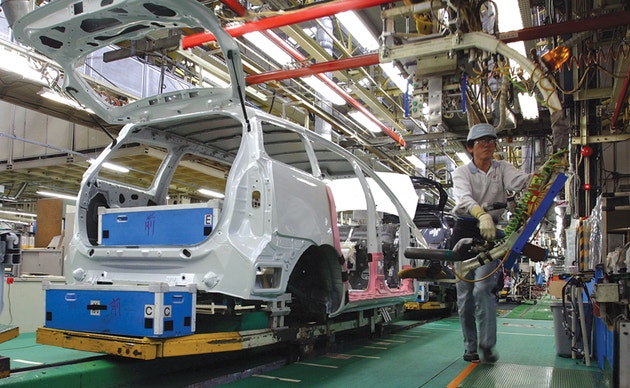An Economic Pivot to Asia
October 6, 2015

If ratified by the countries party to it, the Trans-Pacific Trade Agreement will cover goods as diverse as automobiles, drugs, and clothing. © Junko Kimura, Getty Images
On Monday, October 5, trade ministers from the United States, Australia, Japan, and nine other Pacific Rim nations reached a deal on the Trans-Pacific Partnership (TPP), a sweeping trade liberalization pact that will cut trade barriers and set common standards. The deal paves the way for individual governments’ approvals—something much easier said than done, especially in the often-dysfunctional U.S. Congress. The other TPP countries are Brunei, Canada, Chile, Malaysia, Mexico, New Zealand, Peru, Singapore, and Vietnam.
If the TPP is approved, it will be the largest regional trade accord in history, representing two-fifths of the global economy. The major points of the TPP include the reduction of tariffs and import restrictions, protections for copyrights and other intellectual property, the enforcement of common labor and environmental rules, and the creation of a forum for international legal challenges.
The TPP is much more than a trade deal, as it creates a common and fair platform on which all member economies must agree to operate. Labor practices, for example—including working hours, wages, work environment, and pollution—would have to meet the same standards in each country. The deal also allows such American exports as agricultural products, cars and trucks, consumer goods, information technology, and machinery to enter countries that currently limit or ban such imports to protect their own industries. Crucially, the TPP also creates an alternative to the current Asia-Pacific economy dominated by China—an economy lacking in the fundamental protections and requirements of the TPP.
In June, the U.S. Senate gave U.S. President Barack Obama “fast-track” authority to negotiate the TPP, meaning the Congressional approval vote will be free of amendments or filibuster. Securing enough votes for approval, however, will require some wheeling and dealing. Many Democrats fear the deal’s impact on trade unions, as well as its Wall Street- and corporate-friendly details. Many Republicans oppose the deal because they fear the loss of American jobs and simply because it was Obama’s initiative. A vote on the TPP will most likely not occur until 2016—an election year, so anything can happen.
Back in time articles


